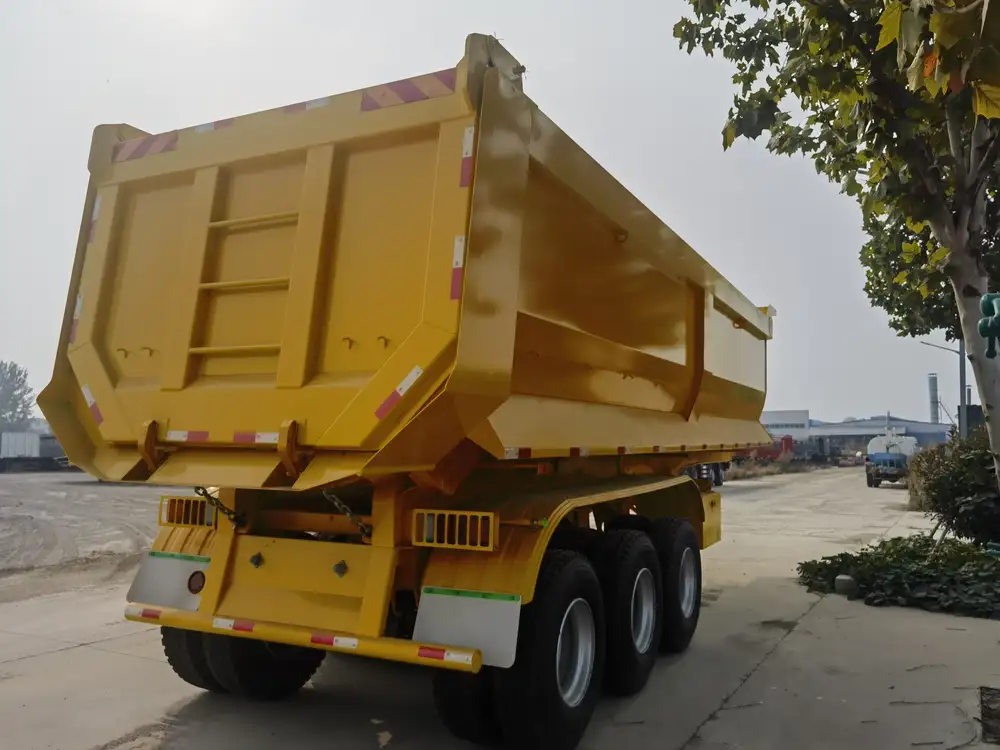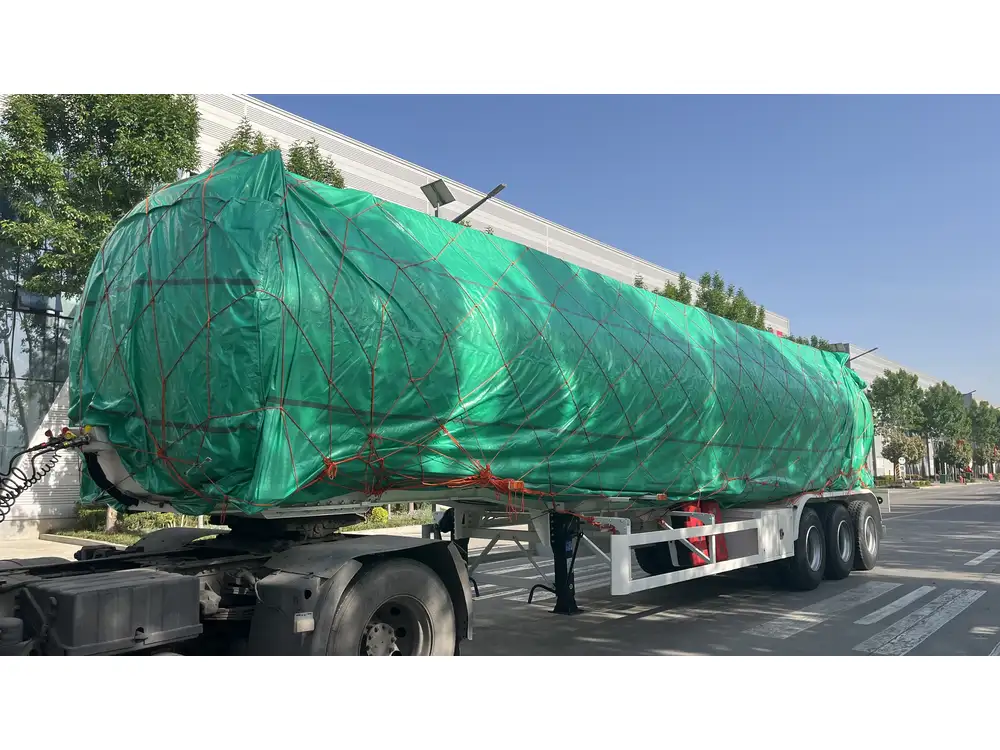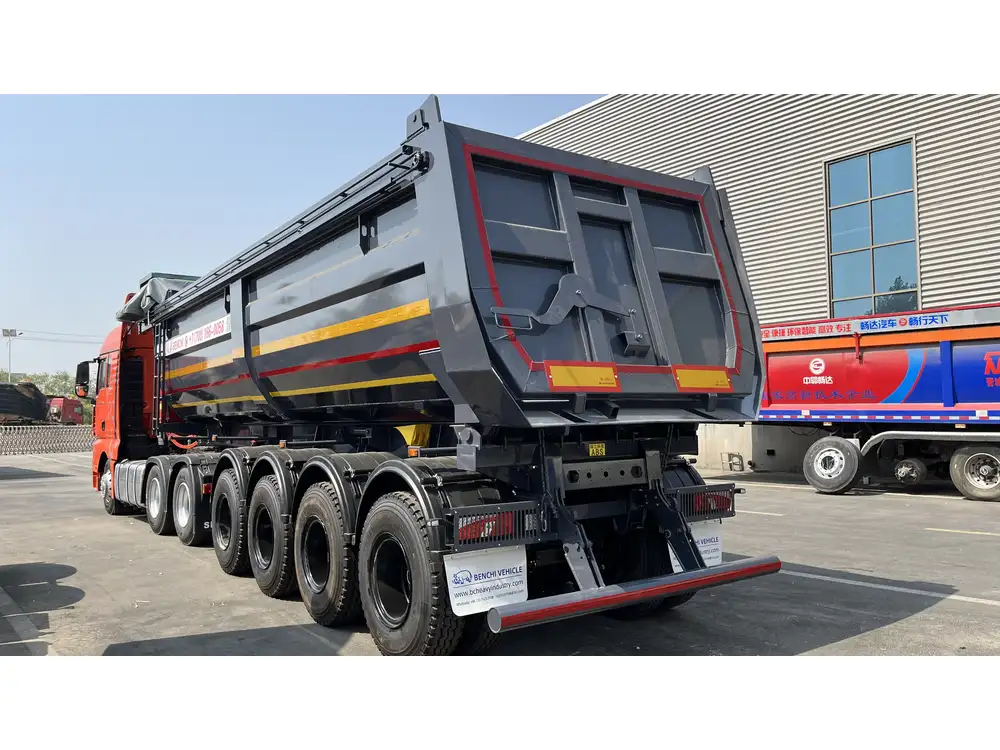When it comes to maintaining the integrity and functionality of your dump trailer, ensuring that the electrical systems are in optimal condition is crucial. One of the essential components that can significantly enhance the usability and safety of your dump trailer is the Trailer Wiring and Recovery Panel (TWRP). In this comprehensive guide, we will provide you with an in-depth overview of how to install TWRP on a dump trailer, ensuring that it operates efficiently and reliably for all your hauling needs.
Table of Contents
- Understanding the Importance of TWRP
- Tools and Materials Needed
- Step-by-Step Installation Process
- 3.1 Preparing Your Dump Trailer
- 3.2 Wiring Connections
- 3.3 Mounting the TWRP
- 3.4 Testing the Connections
- Common Issues and Troubleshooting
- Maintenance Tips for Your TWRP System
- Conclusion
1. Understanding the Importance of TWRP
The Trailer Wiring and Recovery Panel (TWRP) is a vital accessory for dump trailers, acting as the heart of the electrical system. By managing the trailer’s electrical wiring and providing connection points for various components, TWRP enhances the functionality and safety of your trailer. It supports the power supply to your dump mechanism, lights, and any additional accessories you may have. An effectively installed TWRP can lead to better performance, fewer electrical issues, and improved overall reliability when transporting materials.

2. Tools and Materials Needed
Before initiating the installation process, ensure that you have the following tools and materials at your disposal:
| Tool/Material | Purpose |
|---|---|
| Wire cutters/strippers | To cut and strip the electrical wires |
| Screwdriver set | For mounting and securing the TWRP |
| Electrical tape | For insulating wire connections |
| Heat shrink tubing | For protecting wire connections from moisture |
| TWRP unit | The main component for installation |
| 12V power supply | To power the TWRP during testing |
| Multimeter | For checking electrical connections |
| Torque wrench | To secure bolts to the required specifications |
| Cable ties | For organizing and securing wiring |
Make sure you have appropriate safety gear, including gloves and safety glasses, to protect yourself during installation.
3. Step-by-Step Installation Process
3.1 Preparing Your Dump Trailer

Inspecting the Electrical System
Before starting the installation, it’s vital to inspect the existing electrical system. Look for any frayed wires, loose connections, or corrosion, which can affect performance. Having a well-maintained system will make integrating the TWRP much easier.
Safety Precautions
Disconnect the battery before beginning work to prevent any accidental electrical shocks or short circuits. Ensure the trailer is parked on a flat, stable surface to avoid any accidents during installation.
3.2 Wiring Connections

Identifying Wiring Needs
Before you start wiring, examine the layout of your dump trailer and determine where the TWRP will connect to existing wiring. Common connections include lights, the dump mechanism, and auxiliary power sources.
Wiring Diagram
A basic wiring diagram can provide clarity on how to set up the connections. Below is a simple representation of typical connections for a TWRP installation:
+-----------+
| |
Battery ------>| TWRP |
| |
Lights --------> Lights |
| |
Aux Power --->| Aux Power |
| |
Ground ------> Ground |
+-----------+This setup illustrates how to connect the main battery to the TWRP, ensuring that all components receive adequate power.
Making Connections
- Cut the Wires: Use wire cutters to cut the appropriate length of wire from your battery to the TWRP to ensure a snug fit.
- Strip the Wires: Use wire strippers to remove about 1 inch of insulation from both ends of the wire.
- Connect the Wires: By twisting the stripped end of the wire with corresponding wires in the TWRP, you ensure a strong connection. A zip tie can be useful in organizing these connections.

3.3 Mounting the TWRP
Choosing Mounting Location
Selecting a suitable location for mounting the TWRP is essential. It must be easily accessible yet protected from potential damage due to debris or water exposure.
Secure Attachment
Once the location is identified:
- Align the TWRP with pre-drilled holes on your dump trailer.
- Use a torque wrench to tighten the screws or bolts. Be cautious not to overtighten, as this can strip the screws or damage the panel.

3.4 Testing the Connections
Once installed, it is vital to test all functions to ensure everything operates correctly:
- Reconnect the Battery: After ensuring all connections are secure, reconnect the battery.
- Power On: Turn on the power supply and check all lights, the dump mechanism, and any other connected components to confirm that they are working properly.
- Use a Multimeter: A multimeter can help verify that there is no voltage drop across connections, indicating solid installation.
4. Common Issues and Troubleshooting
Despite careful installation, you may encounter common problems. Here are several issues along with their remedies:
| Issue | Description | Solution |
|---|---|---|
| Lights not functioning | Either all or some lights fail | Check the wiring connections for gaps or disconnections. |
| Dump mechanism not activating | The dump system doesn’t work | Ensure power is reaching the TWRP. Investigate the dump remote or switch itself. |
| Intermittent electrical faults | Electrical shorts or power drops | Inspect for damaged wires or loose connections. Use electrical tape or heat shrink to insulate. |
| Overheating connections | Excessive heat indicates overloading | Ensure the gauge of the wire is appropriate for the load. Install fuses if necessary. |
Developing a habit of routine maintenance checks can help in preemptively identifying and addressing potential issues.
5. Maintenance Tips for Your TWRP System
To ensure your TWRP system stays in optimal condition, consider the following maintenance tips:
- Regular Inspections: Routine checks of wiring and connections can avert potential problems.
- Clean Connections: Dirt or moisture can corrode connections. Regularly clean with a suitable electrical contact cleaner.
- Protect Against the Elements: If your trailer sees harsh weather, consider waterproof covers for exposed electrical components.
- Update Components: As technology evolves, update or replace your TWRP as necessary to enhance performance and compatibility with newer systems.

6. Conclusion
Installing a Trailer Wiring and Recovery Panel (TWRP) on your dump trailer is an essential step that enhances functionality, safety, and reliability. By following the guidelines outlined in this comprehensive guide, you can successfully perform this installation with confidence. Remember that ongoing maintenance is key to ensuring the system remains operational and that your dump trailer continues to serve you effectively in transporting materials.
With the information provided in this article, you should be well-equipped to enhance the performance of your dump trailer through proper TWRP installation and management. Always prioritize safety and adherence to best practices throughout the process, ensuring that your equipment stays functional and reliable for years to come.



